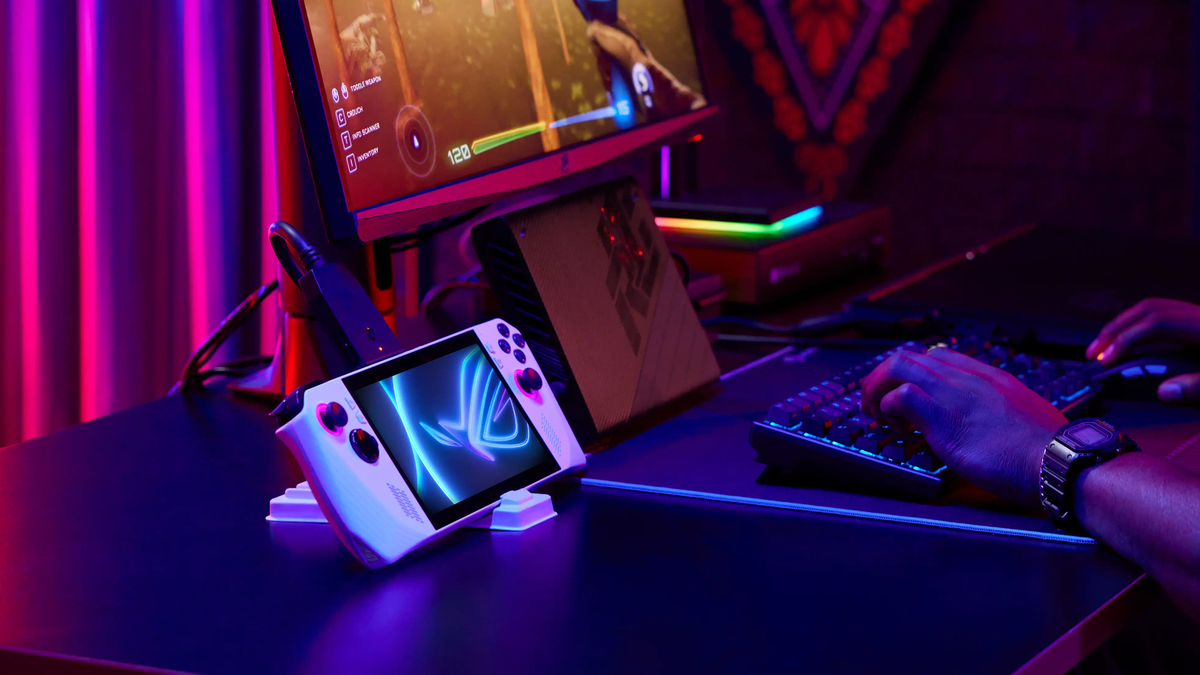Should You Buy ASUS ROG Ally Z1 or Z1 Extreme?

The ASUS ROG Ally Z1 Extreme was quickly dubbed the “Steam Deck killer” when it launched earlier this year, offering better performance than the Steam Deck , a higher resolution display, and easy access to the full version of Windows 11.
But now that the company has released a cheaper and less powerful version, buyers of the ROG Ally portable device have to choose between the Z1 and Z1 Extreme. But how are they different? And does it matter which one you get? Having spent two weeks tinkering with the Z1 and Z1 Extreme, I can confidently say that it absolutely makes a difference which one you buy.
Design and prices
If you place them next to each other, you’ll be hard-pressed to tell the Z1 apart from the Z1 Extreme without noticing the tiny sticker on the bottom of the handheld. That’s because ASUS has provided the same exterior design for both of these laptops—which is a good thing, because the design is great.
Both of these devices are durable, portable devices that don’t feel too heavy in your hands and are easy to hold for long periods of time. (The white color is nice too.) The layout of the joysticks, buttons, and triggers is perfect, as you can move around the controller without stretching your fingers.
But where the design is the same, the price is different. While they may look similar, the ASUS ROG Ally Z1 costs $600 and costs $100 less than the Z1 Extreme. While $100 is a significant difference, if you’re going to spend the money on a device like this, I’d recommend going ahead and getting the Z1 Extreme, simply for the extra performance.
How ROG Ally Z1 and Z1 Extreme work
This is where you start to see the differences between the two devices. If you shell out an extra $100 for the Z1 Extreme, you’ll get extra cores on both the CPU and GPU. While this may seem like ephemeral techno-babble, in practice it makes a big difference when you’re trying to play AAA games like Red Dead Redemption 2 or Starfield. The Z1 Extreme really benefits from these extra performance cores.
Both devices feature the same 512GB internal SSD, as well as the same 1080p screen with up to 120Hz refresh rate. But if you want to make the most of that refresh rate, the Z1 Extreme is the only way to go. (I recently reviewed the Asus ROG Ally Z1 , and while the device isn’t bad by any means, I came away a little disappointed with its capabilities.)
While both devices offer full access to Windows 11, they’re not always easy to navigate, and games often run sluggishly on the slower Z1 chip. By testing the same games on the Z1 Extreme, I was able to play them more confidently without having to tweak the settings. On the Z1 Extreme, for example, I played Starfield at a relatively stable 30fps, albeit with some dips here and there. It’s no surprise , but the regular Z1 struggled to run the game at 15 frames per second, and I often had to wait several minutes for the system to catch up to what I was trying to do. (Steam Deck, which runs somewhere between the Z1 and Z1 Extreme, was also able to handle Starfield at around 30fps, although there were more dips than the Z1 Extreme.)
To be fair, this kind of nitpicking is to be expected from such portable devices – no laptop will offer the level of performance you’d expect from a more expensive desktop or even a gaming laptop. But if you want the ability to play more games with fewer glitches, the ASUS ROG Ally Z1 Extreme is definitely a better choice.
However, if you just plan on playing light indie games and don’t mind the occasional increase in response time, then the Asus ROG Ally Z1 is still a good choice. It’s just hard to recommend it over its slightly more expensive sibling.